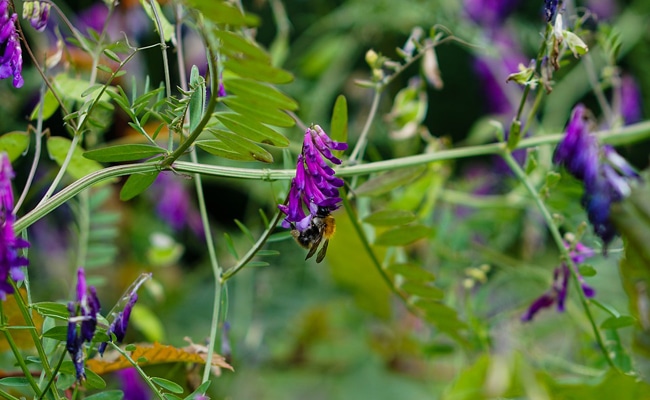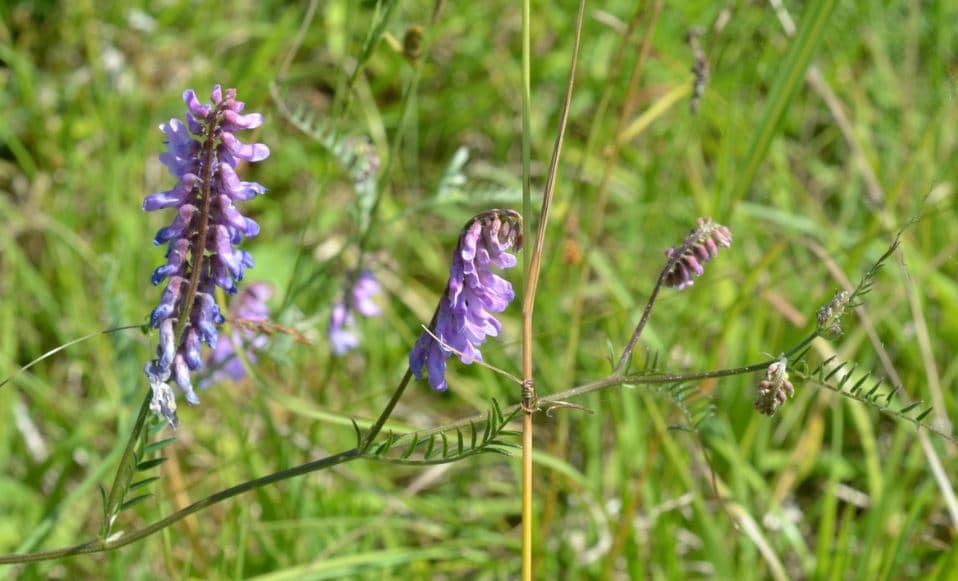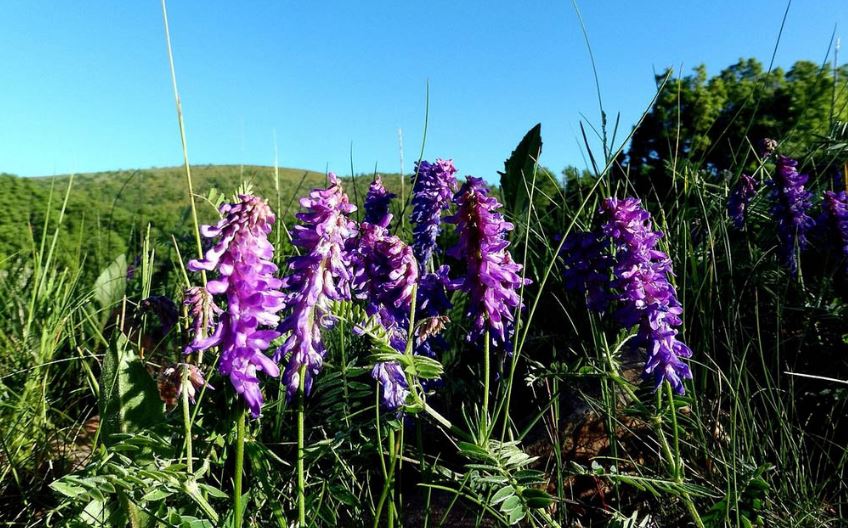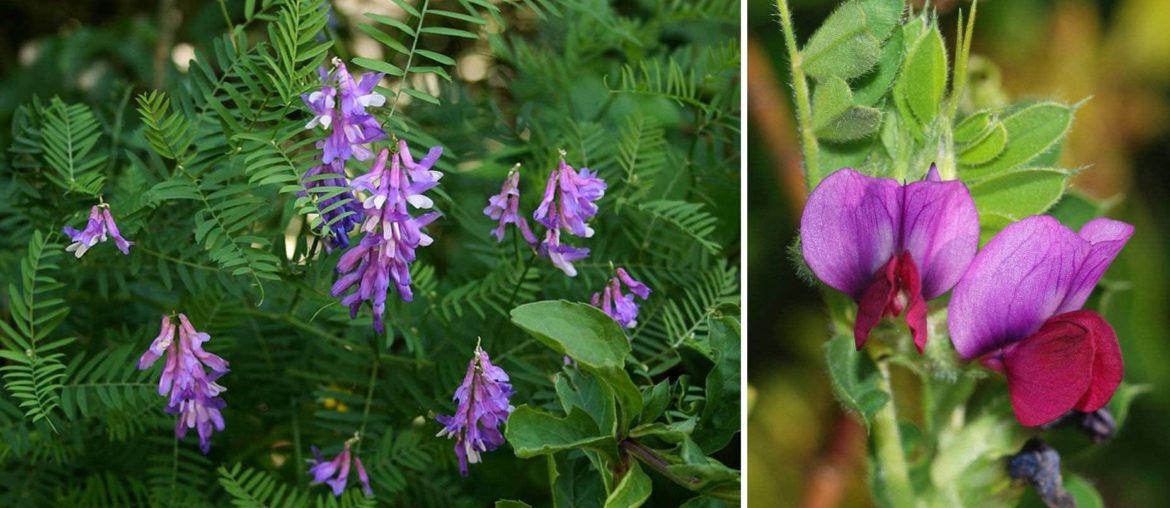When to sow vetches?
Vetch is sown in spring, March and April, or in autumn, August and September, depending on variety. The common spring vetch is sown between March and June and the common winter vetch between August and mid-October. Outside the garden, it is rarely sown alone, most of the time it accompanies cereals. The cereals are then sown first and then the vetch.
Which varieties to choose?
There are different varieties:

Common Vetch, Field Vetch, Cultivated Vetch : this variety is a climber and annual, which measures between 50 cm and 80 cm. It gives pink and purple flowers in colorful beds. It is divided into subspecies. In practice, we can say that we find varieties of spring, sowing between April and May, and varieties of autumn that plant between October and November.

The vetch cracca, Jarosse, pea with toads, big cracca they are taller than the common vetch and it is a perennial and climbing species. It gives a heavy spike of elongated flowers of a beautiful lavender blue color. It is used as fodder and it was formerly grown for its seeds like wheat.

The vetch of Cerdagne : it is a perennial which measures between 50 and 80 cm of height and which blooms in purple ears. It develops in a few months, in a large volume, and it can grow on all the most ungrateful lands: poor or heavy.
What to do before sowing vetches?
Preparing the soil to grow vetches is not an obligation. Some varieties grow anywhere. Common Vetch, however, prefers richer than poor soils. However, it is advisable to dig the plot well and remove all weeds and roots, and then thinly crumble the soil to prepare the seed bed.
How to sow them?
The semi operation takes place in a few steps, once the ground is cleaned and ready:
- You can perfectly mix the vetch seeds with dry sand and sow them on the fly.
- Then divide them to the rake.
- Cover the seeds with earth up to about one centimeter.
- Then pack lightly with the back of your rake.
In good conditions, the seeds germinate in 10 to 20 days.
The multiplication of the vetch is also done by sowing. As with all Fabaceae, you can collect small round seeds by picking the pods when they are mature. Sift the contents and reseed them quickly, they lose their germinative qualities after two years.
Where to plant vetches?
Vetch can easily grow on almost any soil. It does not have a problem with acidic soils, but it tolerates light soils badly and favors those which are rich and fresh.
It can easily withstand cold to -5 and -10 ° C. It is therefore easy to spend the winter in the earth in most regions.
In a natural garden, we try to reproduce the cycles observed in nature. You can perfectly fit the vetch at the foot of the low bushes, trees or shrubs that will adorn the trunks and the bottom so as to embellish it. The common vetch must be chosen for this type of plantation. Since it has an opulent bloom, the result is very aesthetic. In addition, it attracts the auxiliaries and it is melliferous, you increase the biodiversity in the garden very easily.
How to maintain them?
This plant is very simple to grow, it does not require special care.
You do not need to enrich in fertilizer, which naturally produces nitrogen.
At the time of seedling emergence, you should still weed the ground even if it is not very sensitive to this competition.
Vetch tends to spread easily, if you find that it chokes nearby plantations, remove some by cutting the stalks to the ground.
How to water the vetches?
As it tolerates drought very well, you do not need to water or only very little and very rarely, if the drought period is really prolonged.
Harvest vetches: when and how?
You must mow the vetch at least three weeks before putting another plant in this place, it is the same for all green manures. When it blooms, it is the most interesting moment, indeed, it is there that it plays a role on the equilibrium of the soil by bringing to him carbonaceous materials which will be transformed into humus and nitrogen.
You can mow it with the forgery of course, with the shears or the brushcutter. It must then be allowed to decompose on the ground without burying it. You can pass the mower to accelerate the decomposition of this mass.
If you use it as a green fertilizer, you will need to grind it before burying it. We must not wait for it to bloom and to make seeds, the latter, by dispersing, they would make weeds.
The diseases of vetches and what to do?
Vetch is very resistant and has no known enemies in the garden, nor in terms of diseases or pests in gardens.
Plant other flowers:









